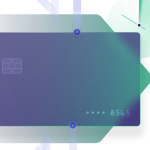In the fast-paced world of fintech, adaptability is the name of the game. Klarna, once known primarily for its B2B payment operations, has undergone a remarkable transformation to focus squarely on the consumer. This shift, marked by a comprehensive app makeover in April, has catapulted Klarna into the spotlight of consumer-oriented finance. Let's delve into how Klarna's user experience (UX) strategy has reshaped its identity and why it matters.
Klarna's app makeover is a testament to its consumer-focused strategy. The revamp introduced several innovative features, including "Ask Klarna," a platform that connects shoppers with fashion experts for purchasing advice. It also introduced a TikTok-like recommendation feed and seamless reselling capabilities. Klarna's desire to develop into more than just a payment option and become the ultimate shopping destination is what motivated this transformation.
Klarna's UX strategy captures the entire purchasing experience as part of its consumer-focused approach. The recommendation and product discovery feeds serve as catalysts for purchases, while the reselling feature keeps users engaged long after their initial transaction.
Klarna understands that consumers prefer suggestions over extensive searches. To cater to this preference, the app offers algorithm-driven buying through its suggestion feed. This system is expected to improve recommendation personalization over time, making product discovery quicker and more tailored to each user.
"Ask Klarna" plays a crucial role in product discovery and conversion. Customers can seek guidance from app agents via chat or video call, who are often experts in their respective niches. Whether it's fashion advice or store expertise, this feature ensures that users can make informed decisions.
Klarna's reselling feature simplifies the process of selling pre-owned items on third-party marketplaces. It pre-fills product information when users are redirected to reseller websites, reducing cognitive effort and streamlining the decision-making process.
The redesign of the Klarna app focused on consolidating functions. The landing page, which previously had numerous entry points, was simplified based on customer feedback. This user-centric approach ensures that navigating the app is intuitive and efficient.
The revamped app received favorable feedback, with interaction rates surpassing those of the previous version. Beyond personalization, Klarna has also integrated influencers and affiliates into its strategy. Content creators can now create "Creator Shops" on the app, improving influencer and affiliate capabilities.
Looking ahead, Klarna aims to refine its app further rather than undergo major revamps. This approach underscores the company's commitment to continuous improvement and stability. As the fintech industry continues to evolve, Klarna's journey serves as a prime example of how adaptability and a user-centric approach can drive success in an ever-changing landscape.
























